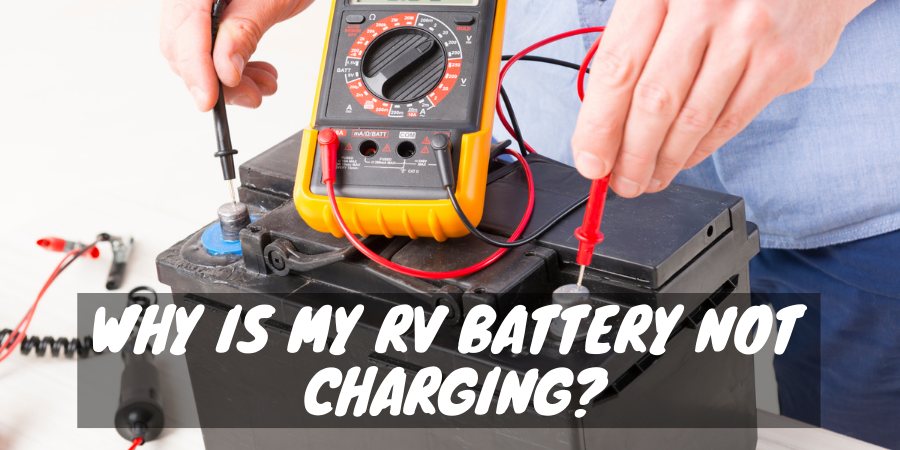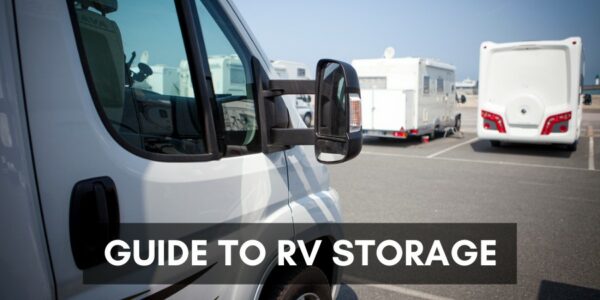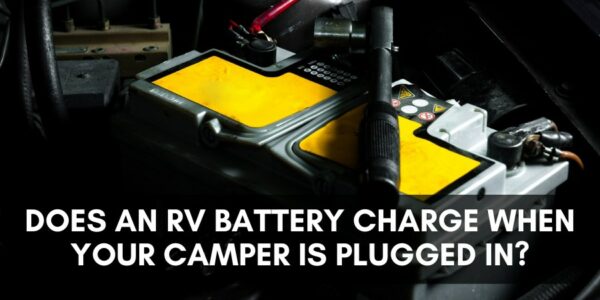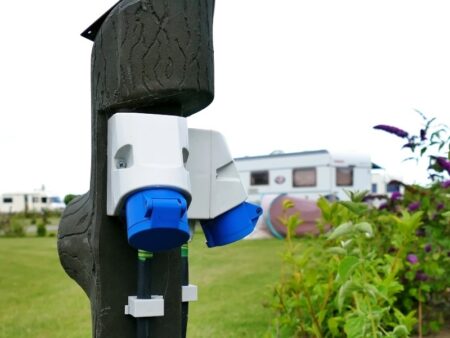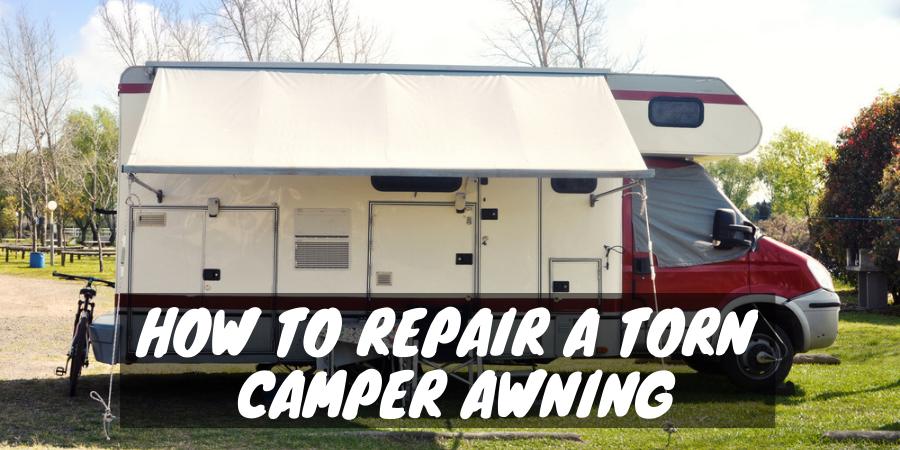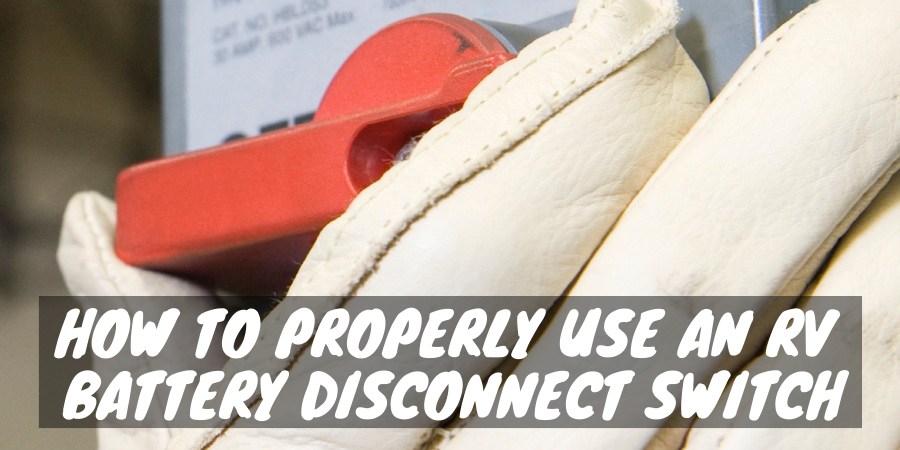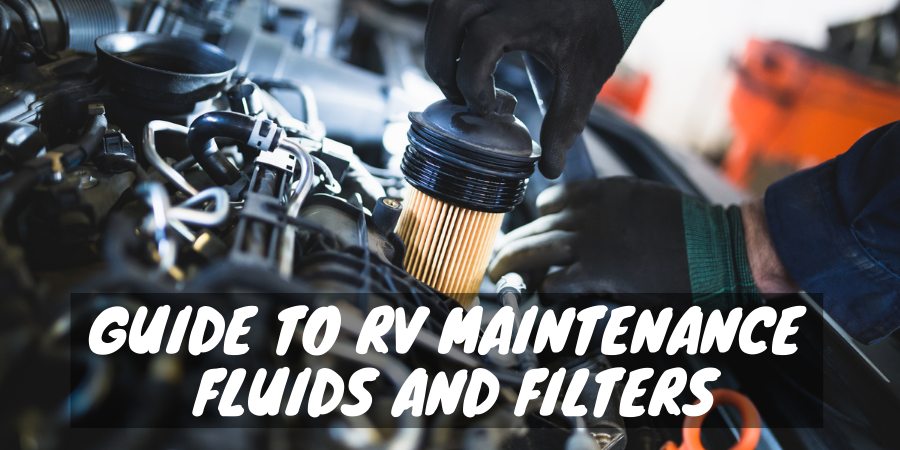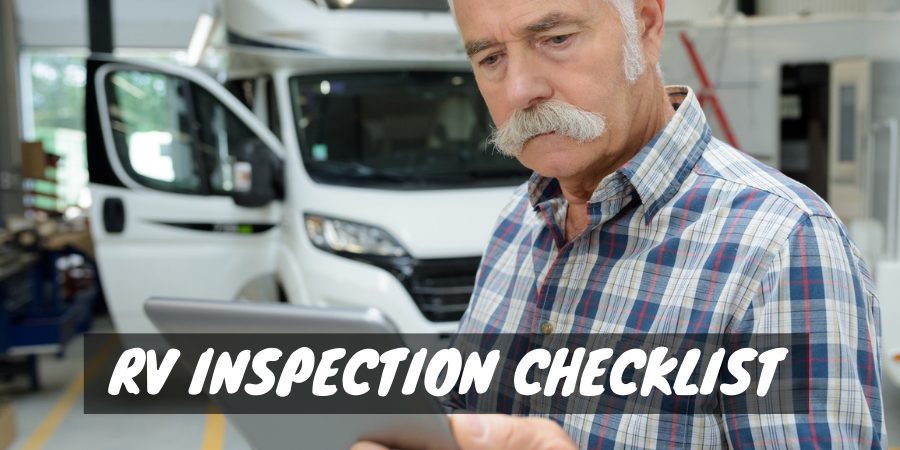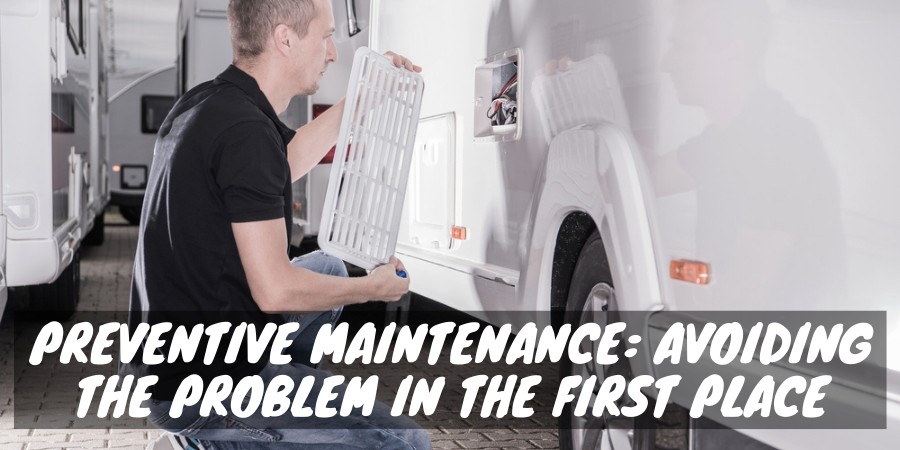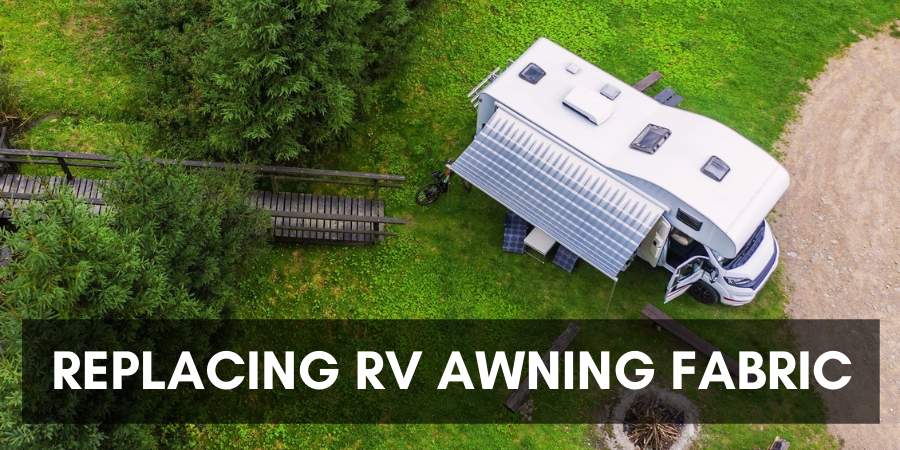The house battery is possibly one of the most critical pieces of RV equipment. When it fails to charge, you’re stuck with problems that can ruin a camping trip.
To learn why your RV battery may not be charging, ways to troubleshoot the issue, and how to fix it, you only need to stay right here.
Please don’t get stuck with a bad RV battery without knowing how to deal with it. Read this guide and be ready when RV battery-charging problems occur!
What Do RV Batteries Do?
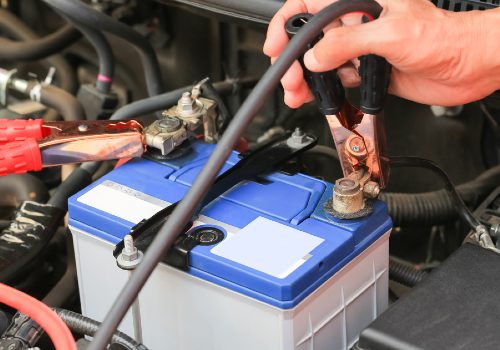
The 12-volt recreational vehicle battery charges through your RV inverter when you hook up to shore power, run the RV generator, or while driving a motorhome or travel-trailer tow vehicle.
Once charged, the batteries will run your camper’s low-amperage features such as:
- Lights
- Fans
- Water pump
- Refrigerator power panel
- Ignitor for propane water heater or furnace
- 12-volt outlets
These items should operate solely off the battery power when not connected to shore power, which allows you to boondock and still use some RV devices.
Depending on the total power output of your RV’s house battery system and how often you run 12-volt features will determine how many days you can operate off-grid before the batteries run down.
Motorhomes have a separate battery that starts your RV, and that battery charges when driving.
Having a working RV battery is essential, as most standard RV refrigerators require 12-volt power to operate, even if you plug into shore power.
Troubleshooting RV Battery Charging Issues
RV battery problems are common. Learning how to troubleshoot battery issues is the best way to save the hassle and cost of taking your RV into a shop for repairs.
Often the problem is an easy fix, but others will require professional help or a battery replacement.
Next, I discuss six reasons why your RV battery is not charging, ways to troubleshoot it, and how to fix it.
1. No Juice at the Power Pedestal
The most straightforward problem with RV batteries not charging is plugging in your camper to shore power at home or a campground, but there’s no electricity present.
If your RV plug is in an outlet and the breaker trips, you may be unaware of the issue before it’s too late and your battery drains.
Without power to charge the unit, your RV battery will slowly drain whether you put a draw against it or not.
How to Troubleshoot 120V Power Issue
First, ensure your RV plug has a solid connection to the 120V outlet. If so, locate the breaker box that controls that outlet.
The breaker is often inside the box above the 30- and 50-amp outlets for RV park power pedestals.
See if the breaker has tripped to the off position.
How to Fix 120V Power Issue
Flip the breaker to the on position to resume power flow to the RV.
If the breaker trips again quickly, the issue typically means the breaker itself needs replacement.
If the circuit keeps tripping after replacing the breaker, it’s detecting a faulty power draw, which will require professional help to diagnose.
2. Wrong Type of Battery Is Installed
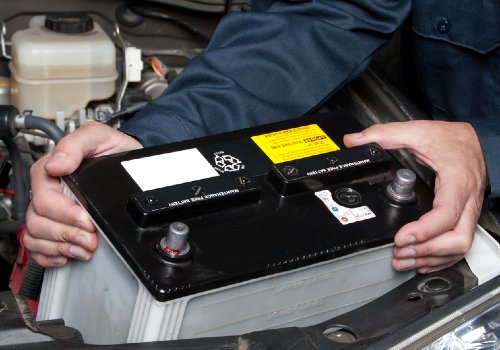
New RV owners may overlook that the wrong type of battery is installed.
There are two types of batteries:
- Deep Cycle Battery
- Starting Battery
How to Troubleshoot Wrong Battery Issue
Any battery in an RV that isn’t for a motorhome engine should be a deep cycle variety.
Open your RV’s battery compartment and check the battery label. You are looking for the words deep cycle or deep cycle marine battery.
A standard starting battery found in vehicles delivers high cold-cranking amps with enough power to start an engine, but afterward, the battery doesn’t need to provide a high load. The slight loss of charge from starting the vehicle will recover when it’s driven.
If your RV has a starting battery in the house bank, the battery will fail quickly and stop charging, as the deep draining and recharging of power the converter puts on it causes damage.
Deep cycle batteries deliver consistent amperage at a lower power. They can support short bursts of the higher amps necessary to start appliances, but that isn’t their primary purpose.
Deep cycle battery power can drain deeper before it slowly recharges without damaging internal components.
Many people, even staff at auto parts stores, are unaware RVs require a deep cycle for the house battery bank, so it’s easy for mix-ups to occur.
How to Fix a Wrong Battery Issue
Remove the starting battery or batteries and install quality deep-cycle marine batteries instead.
3. Battery Wiring Not Hooked Up Correctly
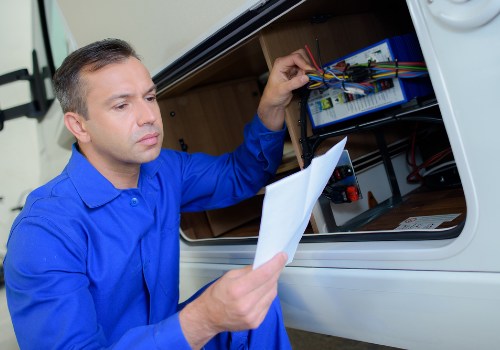
Another reason your RV battery is not charging is incorrect or damaged wiring. If the wiring isn’t moving the power where it needs to go, the battery won’t charge.
Aside from possible jumper cable reattachment mistakes, there can be problems from wiring breaking, wearing down, corroding, or popping loose from road travel vibration and exposure to extreme weather conditions.
How to Troubleshoot Battery Wiring Issues
Open up the RV battery compartment and ensure the wiring is in the right order. You’ll want to disconnect the power running to the battery during this inspection for safety.
All RV battery banks are different, so check the owner’s manual for the correct setup. Be aware that many RVs with after-market solar panel installations may have upgraded the system from the original design.
If you’re sure the positive and negative wiring is attached correctly and firmly to the proper terminals and the ground wire is secure to the metal RV chassis, you need to inspect for other damage.
Remove wiring leads from terminal connections to ensure there’s no debris or corrosion affecting power flow.
After that, follow all the wiring, looking for any burnt, frayed, sliced, or worn areas that will cause electrical shorts in the system.
Make sure no bare wires are in contact with each other.
Look for any inline fuses along the wiring and pull them to look for damage.
How to Fix Battery Wiring Issues
If the wires are connected incorrectly, reinstall them to the terminals so the positive and negative flow are correct.
Replace any wiring or cables that show any damage. Replace any blown inline fuses.
Clean corrosion from the battery terminals or wiring leads using a mixture of 1 tablespoon of baking soda to 1 cup of water. A small stiff wire or plastic brush will help clean away corrosion from tight areas.
If corrosion is so bad the terminals or wiring leads are unusable, replace the affected parts.
Reattach all the wiring and hook the battery system back to power to see if this fixed your battery charging problem.
4. Bad Motorhome Battery Isolator
Motorhomes have a battery isolator that controls power flow from the engine’s alternator to the coach starting battery and the RV’s house battery bank.
Most motorhome owners are unaware this isolator exists, but it will cause battery charging issues if it shorts out. Isolators can have a solenoid or diode to power the unit.
How to Troubleshoot a Battery Isolator Issue
It’s easier to visually look for a power issue from the isolator by turning on an RV light and starting the motorhome. If the brightness of the light increases after you start the RV, the solenoid is working.
If you don’t see an increase in brightness, the isolator could be bad, but it can also be a blown fuse, loose connection, or damage in the charge line wiring. Inspect the length of the wiring for damage.
If your RV 12-volt lights don’t work at all to test the isolator, you’ll need to get out a voltmeter to test the power flow manually at the isolator.
How to Fix Faulty RV Battery Isolator
Replace any blown fuses or damage found in the charge line wiring.
If the wiring looks good and the isolator is sending power, you need to look elsewhere for the battery charging problem.
If there’s no power at the isolator, you’ll have to repair or replace the component to fix the issue.
5. Converter Power Flow Issues
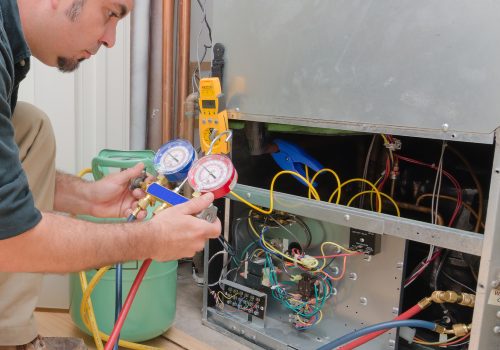
A faulty converter is often the culprit of why your RV battery will not charge properly.
An RV converter is like a control box that collects 120V power coming into the RV and converts it to 12-volt energy to charge the battery bank and run other RV devices.
The converter has many components, and if any of them fail, it can alter the power flowing to charge the battery and cause issues.
CONVERTER CHARGE TYPE
Another aspect of possible faulty battery charging is the type of converter in your RV. To keep the deep cycle batteries in top condition, the converter needs to offer multi-stage charge capability.
Most newer RVs have multi-stage chargers, but older units often have a single-stage converter that will damage your batteries and cause charging issues.
Deep cycle batteries need an initial high-voltage charge to burn off sulfur from the plates, a low and steady charge to rebuild power, and a final trickle or float charge to keep the battery full yet not allow it to overheat. This multi-stage process “conditions” the battery so it functions longer.
A converter that sends a single-stage charge sends a higher power level to the battery, which charges it faster. This process doesn’t condition the battery by allowing the sulfur to burn off, shortening performance and life dramatically.
How to Troubleshoot a Converter Charging Issue
When your RV’s converter is working properly, it should show a voltage reading between 110-130 volts. The onboard batteries should show 11-13 volts.
If you see numbers on a multi-meter that are lower or higher, then there’s probably a faulty converter to blame.
Want to Connect With a Community of Over 1,078 RV Enthusiasts?
The converter has many components, and any of them going bad can mess up the whole system. You can try to pinpoint and repair a bad part if you’re handy, or you can have a professional RV technician diagnose the problem.
QUICK CONVERTER TEST
Verify proper operation of the charge circuit on your converter by checking the brightness of the camper lights, which is similar to testing the battery isolator.
Turn on some RV lights, then watch them as you plug into shore power. If they get brighter, the converter is working.
CONVERTER POWER
Is the converter receiving power? Plug in the RV and test that the power reaches the unit.
Ensure the breaker has not tripped inside the RV or on the power pedestal or external 120V source.
FANS AND FUSES
Is the fan working? You should hear it running off and on during operation.
Are the fuses intact? Pull them and check.
WIRING CONNECTIONS
Are all wires secure in their ports? Do you see any corrosion?
Loose wires or corrosion will disrupt proper power flow through the system.
TEST THE BATTERY
Testing the battery will show whether or not power from the converter reaches the terminals so the battery can charge.
Set a voltmeter to the DC setting and place the leads on the negative and positive posts of the battery. Ensure you are touching the posts only and not the wire leads that attach to the terminal posts.
You should see a reading around 13.5–14 volts.
How to Fix RV Converter Charging Issue
Disconnect power to your RV converter before close inspection or repair of any component.
Replace any blown fuses and tighten or clean off any wiring connections to see if this corrects the issue. If the fan isn’t running after checking fuses and wiring, it could be broken and need replacement.
Corrosion on the circuit board is difficult to access and clean off. If damage has gone this far, it’s easiest to replace the entire converter.
6. Dead RV Battery
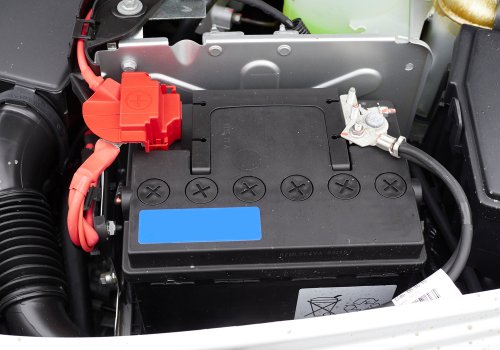
A completely dead battery cannot create enough resistance to allow an intelligent converter to charge the battery. The reaction of a smart converter will often trip a fuse as soon as it detects a battery with a low enough voltage it considers “dead.”
A dead battery is possible after long-term storage as it will naturally discharge slowly when not in use.
How to Troubleshoot Dead Battery Issue
Use a voltmeter to confirm the RV battery charge voltage.
A dead battery will be 10.5 volts or below, and a fully charged battery will read 12.6 volts.
How to Fix a Dead RV Battery
You can take a battery you suspect to be dead to a certified mechanic who can test the battery using more technical methods. This expert help may save you from purchasing an expensive new battery if you can recharge the battery safely for the converter to charge it.
You can also choose to replace any dead batteries, especially those already close to their expiration date.
Final Thoughts
RV battery issues are frustrating, but you can keep your RVing travels on track when you know what could be causing the problem and ways to fix it.
I hope you use the information in this guide to troubleshoot RV battery problems. Please remember to perform routine maintenance on your RV’s entire power system to keep it running smoothly!
Is Your RV Battery Already Dead? Let’s Figure Out Why. (Video)
"Man cannot discover new oceans unless he has the courage to lose sight of the shore."
-- Andre Gide

